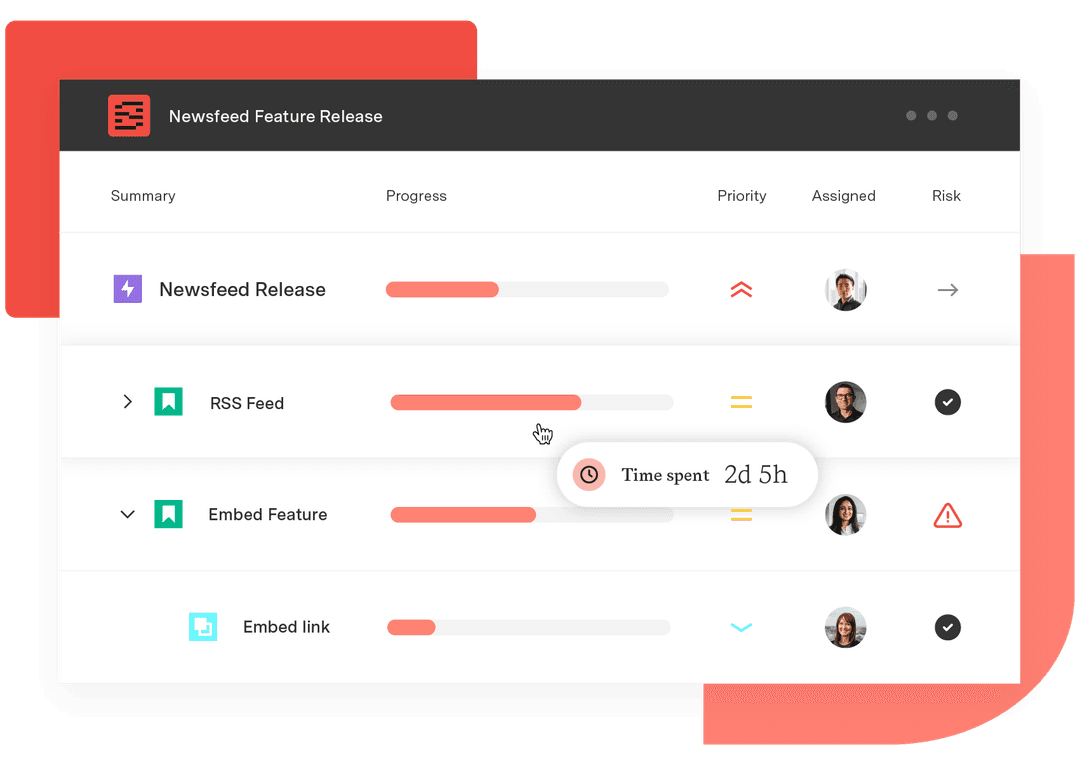11 agile roles and responsibilities decoded
Tempo Team
It’s no surprise to see why agile methodologies have become so popular in the last few decades: They promise it all, from stronger communication to greater productivity and teamwork.
However, with all the known benefits of agile working, why can it sometimes feel like such a headache to implement and get everyone, from leadership to long-established teams, on the same page and working with agile?
This issue may even be more serious than leadership realizes.
According to the 2022 State of Agile Culture report, 72% of senior leadership believed their leaders were successfully applying agile. This attitude wasn’t mirrored business-wide however, as only 34% of delivery team members agreed.
The key to realizing the full potential of agile lies in achieving alignment at every level of the organization, no matter the size of your company. Agile is not an overnight development, and it only gets trickier when running Agile at Scale. Different roles are not used to the workflows or tools, and it can get complicated.
In this blog, we will explore the concept of agile alignment and its importance in ensuring cohesion and success in complex projects of any scale.
Understanding agile alignment
Agile alignment refers to the seamless integration of agile practices throughout your business goals, team objectives, and customer needs. It involves aligning the efforts of cross-functional teams, stakeholders, and management with the strategic vision of the organization. Where this gets tricky is trying to develop agile practices in areas where it typically isn’t used (it isn’t uncommon to hear agile described as something only for developers or tech workers), or when teams reject the tools and software that enable agile working.
How to achieve agile alignment
Consider an Agile at Scale framework
The good thing about moving towards agile working practices is that you are not alone. Hundreds of companies from the Fortune 500 to the smallest teams have done it before and there is a lot of learning to be acquired.
An Agile at Scale framework is a method for maintaining agility across diverse teams and leadership levels for companies of a greater size.
The most well-known of these is the Scaled Agile Framework (SAFe). Created by Dean Leffingwell and Drew Jemilo in 2011, SAFe is a series of ever-evolving principles to apply to your organization’s working practices such as building incrementally and applying systematic thinking.
If you want more learning on SAFe specifically, you can read all about it on their own site. Beyond SAFe, here is quick breakdown of other agile frameworks:
Scrum: Scrum promotes collaboration, adaptability, and iterative development. It breaks projects into manageable sprints, fostering transparency and continuous improvement.
Kanban: Kanban provides a visual board for working processes that limits and optimizes tasks. By limiting work in progress, teams achieve a smoother workflow, increased efficiency, and stronger overall productivity.
Extreme Programming (XP): Extreme Programming focuses on collaboration, feedback, and delivering high-quality software. With practices like test-driven development and continuous integration, XP helps teams produce reliable, customer-focused results.
Lean Software Development: Lean Software Development applies lean principles to streamline software development, eliminating waste and delivering only what the product and customer needs. It emphasizes efficiency, continuous improvement, and delivering value with minimal resources.
Dynamic Systems Development Method (DSDM): DSDM takes an iterative and incremental approach to software development, involving active user participation and delivering increments of business value. It prioritizes flexibility, collaboration, and rapid delivery.
Set clear objectives
The first part of becoming aligned is to be big and visible in all your communication to the rest of your organization.
Setting clear objectives and key results (OKRs) means ensuring everyone is a part of setting their own objectives to ensure they understand them and agree they are reasonable to achieve.
That requires discussions with stakeholders about workload and what blockers could show up down the road that need to be prepared for. It also helps to break down the larger objectives into smaller, manageable tasks with measurable results.
Create a living roadmap so all stakeholders can view these goals on-demand. This helps as people won’t have to ask someone for permission to check their goals or have a static PDF that won’t be able to change as time goes on and could result in someone having out of date information.
Stakeholder communication
Aligning with your teams doesn’t stop with getting them involved with strategy. That is the first way to get them on board with agile, but agile requires daily meetings with teams to keep everything in check.
To prevent these from becoming a frustration or a break in the workflow, try to schedule them as early as possible in your team’s working day and limit them to 15 minutes at absolute maximum. They aren’t times for chit-chat and sharing fun stories, just quickfire updates on working progress.
These meetings are designed to identify any gaps or deviations, and if any decisions need to be made to change around big-picture objectives.
On top of dailies, leaders should be conducting periodic retrospectives to reflect on alignment issues and backlog organization challenges.
Establish standardized guidelines for backlog management across teams. Try to define clear criteria for prioritization, sizing, and grooming of backlog items to ensure consistency and clarity across all different departments.
With such uniformity and visibility across all your teams, with goals agreed upon by said teams, full organizational alignment will follow.
Check out our blog for more on agile communication best practices.
Regular reporting
Regular meetings are important but they quickly become useless if you’re not using data to inform what you’re talking about.
Deciding what to do next involves considering the current status of your tasks, what everyone’s workload looks like, and where the blockers are.
The best way of engaging with these questions is by visualizing them in agile reports. Ideally you want to stick these reports on a dashboard where everyone can see at a glance what’s happening.
Sign up for a demo
RegisterReporting and data visualization don’t just trigger discussions in meetings. They also create transparency among team members and enable leaders to monitor how everyone is performing.
Invest in training and development
New tools and working practices can be intimidating or obtuse to teams that are settled with the ways they have been working for years.
Without the proper training, both for management and teams, tools will have slow adoption and lack of training can leave teams out in the cold and feeling abandoned by management.
Agile, however, is not something best learned by sitting people down and making them read a long list of principles. Agile is something that works through trial and error and constant communication to make everyone’s workflows more efficient — so embrace it.
Track errors, give people training in the tools they will be working on, let them know how agile is done and then give it a try with the idea in mind that you’ll always be looking for ways to improve and it is never “finished”.
While you can hire an agile coach to get things working quickly, just remember that agile is about the “we” and not individual stakeholders. To get everyone aligned with agile, they need to be removing blockers and collaborating with everyone relevant in their workspace. That could mean splitting up teams, creating pairs, or whatever makes the most sense for your team to get everyone on the same level.
Agile tools to align your strategy with your resources
Wherever you are on your agile journey, and whatever flavor of agile you’re running, Tempo’s modular and flexible solutions offer the complete suite of tools to support your organization.
From setting the strategy for the whole business and communicating the roadmap with Strategic Roadmaps, to organizing the work for the teams getting it done in Structure PPM, and visualizing performance in Custom Charts, Tempo has the tools for any company looking to develop their agile workflows.
For more resources like this visit Tempo's Agile at Scale page.












































